
Extractive summaries and key takeaways from the articles carefully curated from TOP TEN BUSINESS MAGAZINES to promote informed business decision-making | Since 2017 | Week 388 | February 14-20, 2025 | Archive
Listen to this week’s newsletter in audio
Shaping Section
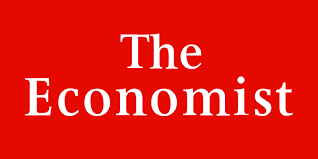
How AI will divide the best from the rest
The Economist | February 13, 2025
Extractive Summary of the Article | Listen
2 key takeaways from the article
- At a summit in Paris on February 10th and 11th, tech bosses vied to issue the most grandiose claim about artificial intelligence. Mr Altman’s prediction taps into an established school of thought. As large language models first gained popularity in the early 2020s, economists and bosses were hopeful that they, and other AI tools, would level the playing field, with lower-skilled workers benefiting most. Software capable of handling tasks such as protein-folding and poetry-writing would surely democratise opportunity.
- More recent findings have cast doubt on this vision, however. They instead suggest a future in which high-flyers fly still higher—and the rest are left behind. In complex tasks such as research and management, new evidence indicates that high performers are best positioned to work with AI. Evaluating the output of models requires expertise and good judgment. Rather than narrowing disparities, AI is likely to widen workforce divides, much like past technological revolutions.
(Copyright lies with the publisher)
Topics: Technology & Humans, Artificial Intelligence, Job Market, Employment, Productivity, Highly Skilled Workers
Click for the extractive summary of the articleAt a summit in Paris on February 10th and 11th, tech bosses vied to issue the most grandiose claim about artificial intelligence. “AI will be the most profound shift of our lifetimes,” is how Sundar Pichai, Alphabet’s boss, put it. Dario Amodei, chief executive of Anthropic, said that it would lead to the “largest change to the global labour market in human history”. In a blog post, Sam Altman of OpenAI wrote that “In a decade perhaps everyone on earth will be capable of accomplishing more than the most impactful person can today.”
Mr Altman’s prediction taps into an established school of thought. As large language models first gained popularity in the early 2020s, economists and bosses were hopeful that they, and other AI tools, would level the playing field, with lower-skilled workers benefiting most. Software capable of handling tasks such as protein-folding and poetry-writing would surely democratise opportunity. Jensen Huang, chief executive of Nvidia, a chip designer, envisioned a future in which workers “are all going to be CEOs of AI agents”.
More recent findings have cast doubt on this vision, however. They instead suggest a future in which high-flyers fly still higher—and the rest are left behind. In complex tasks such as research and management, new evidence indicates that high performers are best positioned to work with AI. Evaluating the output of models requires expertise and good judgment. Rather than narrowing disparities, AI is likely to widen workforce divides, much like past technological revolutions.
The case for AI as an equaliser was supported by research showing that the tech enhances output most for less experienced workers. The problem is that this is swamped by another effect. A job can be considered as a bundle of tasks, which tech may either commoditise or assist with. Thus despite the early optimism, customer-service agents and other low-skilled workers may face a future akin to cashiers. Their repetitive tasks are susceptible to automation.
Unlike earlier automation, which replaced routine jobs such as assembly-line work and book-keeping, AI may extend its reach to non-routine and creative work. It can learn tacitly, recognise patterns and make predictions without explicit instruction; perhaps, in time, it will be able to write entertaining scripts and design useful products. For the moment it seems as though, in high-wage industries, it is junior staff who are the most vulnerable to automation.
The shift in recent economic research supports his observation. Although early studies suggested that lower performers could benefit simply by copying AI outputs, newer studies look at more complex tasks, such as scientific research, running a business and investing money. In these contexts, high performers benefit far more than their lower-performing peers. In some cases, less productive workers see no improvement, or even lose ground.
Labour markets have always been defined by the destruction of old roles and the creation of new ones. David Autor of MIT has estimated that 60% or so of work in America in 2018 did not exist in 1940. who will take AI’s new jobs when they emerge? History suggests that technological upheavals favour the skilled. AI appears poised to follow a similar path, benefiting those with the judgment, agility and expertise to navigate complex, information-rich environments.
show less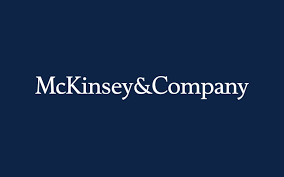
Davos 2025: CEOs are excited to go on offense
By Daniel Pacthod et al., | McKinsey & Company | February 6, 2025
Extractive Summary of the Article | Listen
2 key takeaways from the article
- What a week. The World Economic Forum (WEF) Annual Meeting is always a kind of Rorschach test of the world’s hopes and concerns. This year’s weeklong meeting overdelivered on both counts. On balance, we’d say the edge goes to the optimists.
- The conversations focused heavily on how to find real, practical strategies for productivity, growth, and resilience in an uncertain world. Seven themes that were debated consistently throughout the week: Keeping tabs on changes in the United States, Harnessing gen AI, Catalyzing European growth and competitiveness, Creating 21st-century leaders today, Advancing the energy transition: Beyond the “why” to the “how”, Accelerating progress and innovation in health, and Harnessing the cross-industry potential of space as a growth engine.
(Copyright lies with the publisher)
Topics: Global Business, Development, Employment, Europe, USA, Health, Human & Technology, Davos 2025
Click for the extractive summary of the articleWhat a week. The World Economic Forum (WEF) Annual Meeting is always a kind of Rorschach test of the world’s hopes and concerns. This year’s weeklong meeting overdelivered on both counts. On balance, we’d say the edge goes to the optimists. The conversations focused heavily on how to find real, practical strategies for productivity, growth, and resilience in an uncertain world. Seven themes that were debated consistently throughout the week
- Keeping tabs on changes in the United States. CEOs are paying close attention to the possibility of new tariffs and trade wars, with many seeking to understand the implications for their industries, supply lines, customers, and investments. Additionally, there’s an expectation that, with US regulators more inclined to approve mergers, a wave of dealmaking and growth may be forming. Across it all, CEOs talked about how to get on the front foot and go on offense. Conversations at Davos highlighted the growing challenges to global cooperation, but there are paths to bolster this. In their discussions, the authors emphasized how companies can build a geopolitical strategy around ten value drivers. Asian companies have a particular opportunity: As their influence grows, the region could become the engine of global trade due to its technological prowess, industrial strength, and sheer size, coupled with its increasing domestic savings and investment potential.
- Harnessing gen AI: Call my agent. Generative AI represents a $4.4 trillion opportunity and has the potential to reimagine entire enterprises, yet only 11 percent of gen AI pilots actually scale. To capture the full potential of this new technology, executives need to be willing to make structural changes such as rewiring the organization and modernizing the technology stack. Executives focused on two points this week. First, the cost of software development is approaching zero. Second, the sudden appearance of DeepSeek threw off many companies’ previous calculations about the cost of compute and energy consumption; the wheels are still turning on these questions.
- Catalyzing European growth and competitiveness. All are concerned about the widening gap with the United States. To thrive in this era, Europe needs a strategic framework and integrated agenda for competitiveness, with business leaders and policymakers working hand in hand toward ambitious new goals. Two ideas came up repeatedly: a 28th regime for the European Union—a cross-country set of greenfield tax policies, labor rules, and regulatory standards—and the collaboration of businesses and policymakers to develop business cases for specific investment needs and lighthouse initiatives and outline the changes needed in EU policies for the cases to add up.
- Creating 21st-century leaders today. A new set of skills is required to be effective in today’s tumultuous world, where leaders are constantly grappling with a range of near-existential issues. Taking a service leadership approach that focuses on empowering your teams to be successful, embracing levity and humor, having a continuous learning mindset, and building grit and resilience are just a few of the attributes needed to excel as a 21st-century leader. Organizations should treat leadership development as a core capability to develop a cadre of talented leaders to withstand future disruption. As cycle times speed up, truly resilient companies will need dynamic leaders with new traits and skill sets.
- Advancing the energy transition: Beyond the “why” to the “how.” The wildfires in California offered a vivid reminder that climate change remains a potent force. CEOs told us that meaningful momentum toward net zero is building. One hopeful sign: Plasma simulations of nuclear fusion suggest that the long-hoped-for technology may yet pan out. Still, the world is not transitioning quickly enough to achieve the goals that societies, governments, and the private sector envision. Executives are focused on the need to run two energy systems in parallel: fossil fuels and clean energy. It’s a difficult balance.
- Accelerating progress and innovation in health. On the heels of a report that McK published with WEF in 2024 that sheds light on the substantial health inequities women face globally, there was significant conversation this year on how health conditions could be improved across the board. This year’s report on the topic provides a blueprint for developing a global view of women’s health and raises clear opportunities to improve the lives of women today and for future generations.
- Harnessing the cross-industry potential of space as a growth engine. Space is poised to be a $1.8 trillion opportunity for global economic growth. As the space economy expands, it could create value for multiple industries and enable new ways of working far beyond the aerospace sector—from supply chain operations to global communications to worldwide access to education and more.
Strategy & Business Model Section
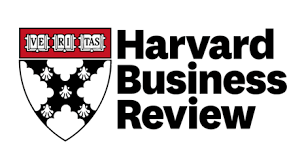
Precedents Thinking
By Stefanos Zenios and Ken Favaro | Harvard Business Review Magazine | March–April 2025 Issue
Extractive Summary of the Article | Listen
3 key takeaways from the article
- Innovation can be daunting. Creating something entirely new feels intimidating. But that feeling misses a vital truth: Most great innovations are creative combinations of existing ideas. Examples abound.
- Ford, Hastings, and Buffett achieved breakthroughs by creatively combining prior innovations. According to the author their experience of helping student-entrepreneurs launch startups and CEOs innovate their strategies, they have perfected a method of unlocking this powerful source of innovation: precedents thinking. It involves three steps. First, frame your challenge and its key elements. Next, search for previous innovations—precedents—relevant to each element. Finally, combine some or all of those precedents—in part or in whole—to generate your best ideas. This is what Albert Einstein called “combinatory play.”
- In practice each step can be revisited multiple times in light of learning from subsequent steps. You iterate through this process until your intuition tells you that you have a breakthrough that will work.
(Copyright lies with the publisher)
Topics: Strategy, Business Model, Innovation, Creativity
Click for the extractive summary of the articleInnovation can be daunting. Creating something entirely new feels intimidating. But that feeling misses a vital truth: Most great innovations are creative combinations of existing ideas. Examples abound.
Ford, Hastings, and Buffett achieved breakthroughs by creatively combining prior innovations. According to the author their experience of helping student-entrepreneurs launch startups and CEOs innovate their strategies, they have perfected a method of unlocking this powerful source of innovation: precedents thinking. It involves four steps.
- Find a novel framing of the problem. Most great innovations start with a novel framing. For example, Henry Ford began not with the conventional How can I make more money selling cars? but with How can I make cars more affordable for everyone? That made him unique among his peers, all of whom were more interested in how to make better cars for the 5% of the population that could already afford them. A few techniques can help ensure that your framing is as novel as possible. The first is to strive to keep it neutral. That means being agnostic about the solution to the problem. Another technique is to keep asking Why? A third technique is allowing the framing to evolve—something that corporate leaders and student entrepreneurs who conceive viable breakthroughs often accomplish.
- Search both near and far for precedents. When applying precedents thinking, inspiration from both within your domain and outside it is essential. According to the author in their experience, the best way to find pertinent out-of-domain innovations is to “disassociate” the elements of your problem such that they are no longer specific to your domain, and to move from asking How? to asking Who? Another powerful way to find the best precedents is to create an innovation team whose members have as much work-life diversity as possible. Someone who has had a variety of experiences is far more likely to bring inspiration from outside the problem domain. Engaging with large language models can accelerate a productive search for precedents, particularly out-of-domain ones.
- Foster combinatory play. Combinatory play resulted in innovations that might never have happened otherwise. Indeed, the first two steps of precedents thinking—frame and search—are really just (necessary) preparation for the breakthroughs that come from creative combinations. Combinatory play is best done first individually and then in groups. People need private time and space for their minds to make the unexpected connections between precedents that lead to “aha!” moments. However, combinatory play in groups is also essential to getting the best results from precedents thinking. Individuals can bring something to the table that sparks a great idea from someone else. There are two keys to fostering combinatory play in groups. The first is to be fully aligned on the challenge you are trying to solve. The second key is for every team member to fully internalize every precedent before the team comes together.
- Use precedents thinking to guide execution, too. Precedents thinking is not just for generating big ideas; it’s for bringing them to fruition. Studying relevant precedents in depth and learning from their key implementation tactics can make the difference between success and failure.
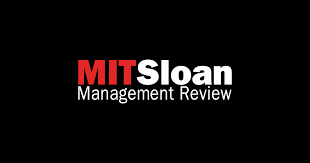
How Leaders Champion Culture: Six Essential Lessons
By Donald Sull and Charles Sull | MIT Sloan Management Review | February 19, 2025
Extractive Summary of the Article | Listen
2 key takeaways from the article
- Core values are ubiquitous — but unfortunately, in most organizations, core values are also irrelevant. Only a handful of companies, which the authors call the Culture Champions, buck the trend and consistently walk the talk of their espoused core values, according to employee reviews.
- Based on the authors’ series of podcasts with leaders of several of these companies, including HubSpot, the Lego Group, Bain & Co., Hermès, and Cummins, to understand how the leaders embed core values and leadership expectations throughout the organization, the following six key insights have emerged on how organizations champion on core cultural values. These are: involve employees in articulating core values to ensure authenticity, enlist volunteers to embed culture throughout the organization, coordinate your people processes to reinforce cultural values, use core values as a framework to make key business trade-offs, provide basic skills training on how to have critical conversations, and when someone is a poor cultural fit, recognize it and address it.
(Copyright lies with the publisher)
Topics: Leadership, Culture, Teams, Core Values
Click for the extractive summary of the articleCore values are ubiquitous — but unfortunately, in most organizations, core values are also irrelevant. Only a handful of companies, which the authors call the Culture Champions, buck the trend and consistently walk the talk of their espoused core values, according to employee reviews. In a series of podcasts, the authors have spoken with leaders of several of these companies, including HubSpot, the Lego Group, Bain & Co., Hermès, and Cummins, to understand how the leaders embed core values and leadership expectations throughout the organization. You can learn from these six key insights that they shared on how to champion your organization’s core cultural values.
- Involve employees in articulating core values to ensure authenticity. Managers sometimes cherry-pick cultural elements from other companies and attempt to impose them on their own organization. Unfortunately, those values are often divorced from organizational realities and fail to resonate with employees. A better approach is to include employees in the process of surfacing and articulating values to ensure that they’re rooted in the company’s distinct history, leadership style, size, location, and other factors that shape corporate culture, Burke advised.
- Enlist volunteers to embed culture throughout the organization. A bottom-up process is a powerful way to not only articulate leadership principles but also embed them throughout the organization. “You need buy-in,” said Loren Shuster, chief people officer at the Lego Group, and “there’s only so much you could do at the top of the organization.” You need as many employees as possible to be truly committed to upholding the organization’s purpose and executing the strategy, he said.
- Coordinate your people processes to reinforce cultural values. A common feature among the strong cultures the authors have studied is that leaders use their people processes as tools to reinforce desired values and behaviors. Recruiting and training, for example, are not only deployed to hire great talent and build skills but also to reinforce corporate culture. These people processes are most effective when they heavily involve leaders who embody the desired culture.
- Use core values as a framework to make key business trade-offs. For Sharon MacBeath, group human resources director at Hermès, one of her first initiatives after joining the luxury fashion company was a leadership program for senior managers called Leading With Art. “Leading With Art was a lot about dialogue with tradition,” she explained. “How can we stay within the culture of the company and at the same time make sure we’re moving forward, make sure we’re anticipating the way societal expectations and the world [are] changing?”
- Provide basic skills training on how to have critical conversations. Encouraging constant debate helps organizations navigate uncertainty, but it can be hard on leaders: They must listen to a continuous stream of critiques, manage emotional debates that can boil over, and avoid taking negative feedback personally. Jim Whitehurst, former Red Hat CEO and IBM president, helped build these leadership skills with his team at IBM by introducing a framework to help structure and lead difficult discussions. All people managers received training on using it.
- When someone is a poor cultural fit, recognize it and address it. Few companies are more intentional about building and maintaining corporate culture than Cummins, a manufacturer of diesel engines and integrated power systems. “We have had people self-select out, and we’ve also selected people out when their behaviors … have not matched with what we believe is important,” he explained. “You know, when we’ve had situations where we had to say, ‘This is not working,’ most of the time, it’s not been based on their ability to achieve results. It’s been based on how they go about doing it within the organization. And we make that very clear.”
Personal Development, Leading & Managing Section

17 Coaches On How To Address Leadership Blind Spots
By Forbes Coaches Council | Forbes | Feb 12, 2025
Extractive Summary of the Article | Listen
2 key takeaways from the article
- Even the most accomplished leaders can have habits, assumptions or behaviors that limit their effectiveness without them even realizing it. As a leader, your ability to identify and address these blind spots can be the key to unlocking your next level of growth. But what exactly should you be looking for, and how can you confront these challenges?
- 17 Forbes Coaches Council members share leadership blind spots and strategies for addressing them with clients. Dedicate time to personal development. Slow down and listen for true intent. Assign responsibilities for executing strategic plans. Remember to develop new strengths. Talk through tough situations. Recognize what makes you different. Seek feedback on how your actions affect others. Become aware of how you communicate. Watch how people react to your words. Ask for advice instead of feedback. Recognize and transcend your leadership ‘bubble’. Have 360-degree interviews done with your inner circle. See every conversation as a leadership opportunity. Avoid overused strengths becoming toxic traits. Try new behaviors and test out new tools. Identify how your impact reflects your intent. Learn to trust your team and delegate effectively.
(Copyright lies with the publisher)
Topics: Leadership Blind Spots, Leadership Strengths
Click for the extractive summary of the articleEven the most accomplished leaders can have habits, assumptions or behaviors that limit their effectiveness without them even realizing it. As a leader, your ability to identify and address these blind spots can be the key to unlocking your next level of growth. But what exactly should you be looking for, and how can you confront these challenges?
17 Forbes Coaches Council members discuss leadership blind spots they encounter in their work with leadership clients and strategies for addressing them. Their following insights can provide tools for becoming a more self-aware, adaptive and effective leader.
- Dedicate Time To Personal Development. Read, meditate, reflect and seek new perspectives daily.
- Slow Down And Listen For True Intent. In dialogue, we bring our own reality, meaning and understanding to every word. The blind spot is when we do not slow down and release judgment. We miss the other’s true intent by not asking about their needs or assumptions—then misalignment begins and buy-in is misconstrued.
- Assign Responsibilities For Executing Strategic Plans. Companies can spend a lot of time creating a spectacular strategic plan and creating and executing a communication strategy for the organization, but when that is done, responsibility for execution is missing.
- Remember To Develop New Strengths. A major blind spot is overusing strengths and not developing new ones.
- Talk Through Tough Situations. Leaders can be too positive by overlooking small issues and not giving enough feedback, typically with the goal of not hurting feelings or not taking the time to have a potentially uncomfortable conversation.
- Recognize What Makes You Different. An effective leader is a self-aware leader. One leadership blind spot that an executive coach could help a client identify would be that their own working genius and styles of communicating with, motivating and empowering others may look very different compared to other leaders’ styles.
- Seek Feedback On How Your Actions Affect Others. What evidence do you have that shows your actions as a leader are either helping or hindering the performance and contributions of others? If you are unaware, it’s a good time to seek such feedback.
- Become Aware Of How You Communicate. Most leaders default to a leadership style they were taught early on, whether it’s “control and command” or collaborative. As a coach, making them aware of how they communicate can lead to an instant transformation when you uncover how it exposes their limiting beliefs.
- Watch How People React To Your Words. One potential blind spot is the impact of small words and behaviors on others. A habit of saying, “Yeah, but …” might shut down input, for example, while a shift to saying, “Yes, and …” could encourage more engagement. Consistently asking if there are “any questions,” but then failing to be quiet long enough for people to ask is poor behavior; all it takes is counting to seven to give people a chance to speak up.
- Ask For Advice Instead Of Feedback. A common leadership blind spot is not knowing there may be a disconnect between how you think you are coming across to others and how others are really experiencing you. In the short term, address this by asking others for advice instead of feedback.
- Recognize And Transcend Your Leadership ‘Bubble’. The more senior you become as a leader, the more you find yourself in an invisible “bubble.” Honest, candid feedback becomes increasingly rare, especially when it carries risks for the giver. People may carefully calculate how, when or if to share information with you, often investing more energy into managing you than addressing the message itself. Develop the vision to recognize and transcend your bubble!
- Have 360-Degree Interviews Done With Your Inner Circle. A leader’s blind spot is usually in plain sight of those who work around them. Inviting an executive coach to conduct 360-degree interviews with the leader’s inner circle is a very effective method for uncovering and discovering their few essential behaviors that need attention.
- See Every Conversation As A Leadership Opportunity. Consider that every conversation starts and ends with your audience. Get curious—who is the audience, and what do they care about? Shape a message that considers what they care about.
- Avoid Overused Strengths Becoming Toxic Traits. Any core strength that is overused can become a derailer. For instance, if healthy skepticism crosses into cynicism, it becomes a toxic trait that needs attention. Critical thinking requires cognitive diversity.
- Try New Behaviors And Test Out New Tools. A leader relying too much on their current toolbox is a real possibility. Experiment with new behaviors or tools and observe the results. Often, the result is really illuminating for them, and that allows them to consider its application and opens them up to other possibilities.
- Identify How Your Impact Reflects Your Intent. An executive coach is tremendously helpful in identifying impact versus intent. As executives move up in leadership, they often assume their interactions with people are a direct reflection of their intent. In their role of confidant and “mirror holder,” an executive coach is well-positioned to help leaders recognize when they need to be more focused on their impact on others.
- Learn To Trust Your Team And Delegate Effectively.
Entrepreneurship Section
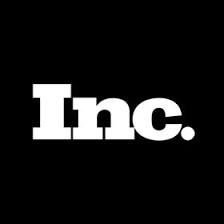
Insurance Horror Stories Abound! Here Are 7 Tips to Prevent Disaster, From Business Owners Who Learned the Hard Way
By Brian Contreras | Inc Magazine | Feb 14, 2025
Extractive Summary of the Article | Listen
A key takeaway from the article
Insurance horror stories are far too common, with founders who thought they were secure left reeling when disaster actually strikes. Here’s the advice that entrepreneurs have for dealing with the industry.
Do your due diligence before signing. Know what’s covered before you need it covered. Act like you’re uninsured, even though you aren’t. Have more than one layer of protection. Be wary of contractors. Get flood-ready. You paid for your insurance—so use it.
(Copyright lies with the publisher)
Topics: Entrepreneurship, Insurance, Disaster, Risk protection
Click for the extractive summary of the articleIt’s just about the last thing an entrepreneur wants to hear: Your product has started to explode. Insurance horror stories are far too common, with founders who thought they were secure left reeling when disaster actually strikes. Here’s the advice that entrepreneurs have for dealing with the industry.
- Do your due diligence before signing. Not all insurers are made equal. Researching the reputations of the insurance providers is crucial. Gett first-hand knowledge, or just as many reviews [as you can], because there are absolutely horrible insurance agencies out there.
- Know what’s covered before you need it covered. Even if you don’t want to think about your insurance except in the case of an emergency, get ready to use it from day one. Read through your policy thoroughly and create a process for what you’re going to do when things go sideways. Having your legal counsel review your policy can also be a good option.
- Act like you’re uninsured, even though you aren’t. It definitely is worth getting insurance just in case something bad could happens, but it’s more on the business owner to make sure that it doesn’t happen,” “Having business insurance, yes, it protected us in the end—but it almost also cost us the business.
- Have more than one layer of protection. Entrepreneurs should think about getting supplemental coverage from a smaller agency. Big firms feel like they can push you around. If you’ve got a little firm, you’ve got a better relationship with them; you’ve probably got one person you talk to. They’ll fight for you.
- Be wary of contractors. Insurers often don’t have enough adjusters to cover the entirety of a territory that’s been ravaged by a major natural disaster—so they farm it out to third parties. The resulting incentive system, he says, can be perverse. Contractors aim to resolve claims quickly to get paid and secure future contracts by minimizing expenses.
- Get flood-ready. If the water is about to come in from below, you should probably go chop a hole in your roof and let the water come in from up top, because you’re covered for that but you’re not covered for the rising water. People tend to not know their policy. They think that they have insurance to cover their loss, and then they come to find out that they’re really not covered at all.
- You paid for your insurance—so use it. A lot of small-business owners think that if [they] make a claim, they’re going to get dropped or their rates are going to go way too high, so they don’t really push too hard. But that’s what you have insurance for—and the insurance carrier knows it. So file the claim, and get your money.

7 Signs of a Broken Cap Table That Could Jeopardize Your Startup’s Success
By Dima Maslennikov | Edited by Chelsea Brown | Entrepreneur Magazine | February 19, 2025
Extractive Summary of the Article | Listen
3 key takeaways from the article
- When building a startup, founders often focus on product development, raising funds, and scaling their business. However, one critical factor that can silently undermine even the most promising venture is a broken cap table. This term refers to a situation where the equity structure of a company is misaligned, leaving founders with a dangerously low percentage of ownership.
- Broken cap table could happen because of excessive dilution of founders’ equity and it could lead to demotivation of founders, investor hesitation, startup’s inability to attract top talent, governance problems, disproportionate influence of dead equity, and logistical challenges and inefficiencies.
- A broken cap table can be the silent killer of even the most innovative startups. By maintaining sustainable founder ownership through each funding stage, startups can ensure their long-term viability. Planning strategically, negotiating wisely and staying vigilant are critical to protecting equity and fostering growth. Remember, your cap table is more than a spreadsheet — it’s the foundation of your company’s financial health and future potential.
(Copyright lies with the publisher)
Topics: Entrepreneurship, Startups, Broken Cap Table
Click for the extractive summary of the articleWhen building a startup, founders often focus on product development, raising funds, and scaling their business. However, one critical factor that can silently undermine even the most promising venture is a broken cap table. This term refers to a situation where the equity structure of a company is misaligned, leaving founders with a dangerously low percentage of ownership.
Let’s explore what a broken cap table means, why it happens and how to avoid it while highlighting common mistakes and actionable solutions.
- Excessive dilution of founders’ equity. A cap table, short for capitalization table, is a detailed breakdown of who owns what percentage of your company. It’s an essential document for understanding equity distribution among founders, investors, employees and other stakeholders. A broken cap table occurs when founders’ ownership drops to unsustainable levels, typically below 20-30% by Series B or C funding rounds. These thresholds show when founders lose control, deterring investors and limiting future funding success.
- Demotivation of founders. A broken cap table is not just a numbers problem — it has far-reaching consequences for your startup. When founders’ ownership is too diluted, their motivation to drive the business forward diminishes. Significant equity stakes are vital for ensuring long-term commitment and strategic decision-making. Investors also look for motivated founders with meaningful stakes in their companies. If founders’ equity falls below 20-30%, it signals potential mismanagement and reduces confidence in the team’s ability to stay fully invested in the venture.
- Investor hesitation. A broken cap table can scare off new investors. They may hesitate to invest if they see that the existing equity structure is unsustainable or overly diluted. Offering competitive equity to attract and retain top talent also becomes challenging when the cap table is already stretched thin. This can severely impact your ability to build a strong, dedicated team. In addition, early investors holding too much equity may exert disproportionate control, leading to governance problems and limiting your strategic flexibility.
- Inability to attract top talent. Several factors can lead to a broken cap table. Accepting too much funding in the early stages often results in excessive equity giveaways before the company has significant valuation growth. Poorly negotiated terms with investors, such as high liquidation preferences or anti-dilution clauses, can disproportionately harm founders’ equity. Failing to forecast equity needs for future rounds and employee stock options can lead to severe dilution over time. While having multiple co-founders can be an asset, splitting equity too thinly at the start can cause issues in later funding rounds. An inadequate or poorly planned employee stock option pool leaves little room to incentivize employees effectively.
- Governance problems. To avoid a broken cap table, founders need to plan equity distribution strategically. Working with financial advisors or lawyers to create a long-term equity allocation plan is critical. Reserving enough shares for future funding rounds and employee stock option pools is essential. Founders should also avoid over-raising in the early stages and focus on raising amounts aligned with their current milestones and growth projections.
- Disproportionate influence of dead equity. If a cap table is already broken, there are steps that can be taken to repair it. Equity restructuring is one approach, where founders negotiate with existing investors to adjust terms or dilute non-critical stakeholders. Downsizing future rounds and focusing on raising smaller amounts in subsequent funding rounds can also help limit further dilution. Allowing founders to sell some of their shares in secondary sales can provide liquidity and balance incentives. Working with strategic investors who understand the need to correct cap table imbalances and are willing to structure deals accordingly is another viable option.
- Logistical challenges and inefficiencies. One of the most common mistakes startups make is giving up too much equity too early. For example, if first investors hold more than 50% equity in the early stages, it signals a loss of control for the founders. To address this, founders can explore non-dilutive funding options, use convertible notes or negotiate future stake reductions. Similarly, in deep-tech spinouts, universities often take ownership stakes exceeding 25%, especially outside Europe. This level of ownership can limit growth potential. Founders should negotiate these stakes down and explore other forms of giving back to the university, such as licensing agreements or revenue-sharing models.

Leave a Reply
You must be logged in to post a comment.